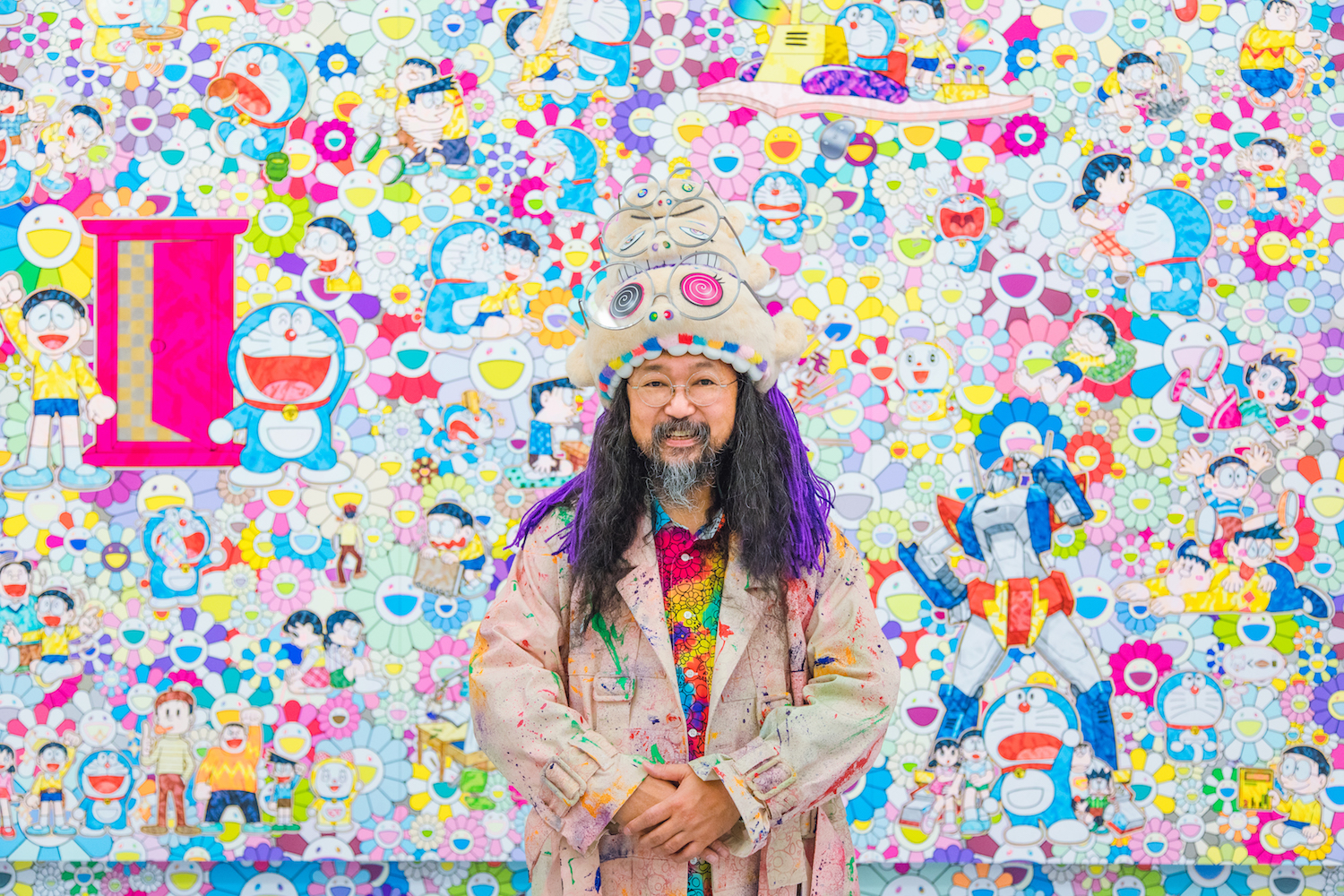
Takashi Murakami Has Rapidly Become One of the World’s Most Sought-After NFT Artists. Here’s How He Did It | Artnet News
Having worked with everyone from Kanye West to Louis Vuitton to Virgil Abloh to Google, Japanese artist Takashi Murakami is no stranger to hype collabs.
Following the recent success of his NFT collaboration with RTFKT Studios, Murakami now appears to have gone all in, with his latest solo exhibition at Gagosian’s New York blossoming with digital bling.
Yet his success in the wild world of NFTs was anything but guaranteed. In March 2021, when Murakami’s company, Kaikai Kiki, was on the verge of bankruptcy, he announced an NFT collection that was promptly canceled before it even dropped.
“The reason I withdrew was because, after mulling over whether I should simply rely on OpenSea and release image files as NFTs or make my own smart contract, I decided to make my own smart contract to maintain the independence of the project in the future,” he told Artnet News.
Then, in November 2021, Murakami teamed up with RTFKT to release a series of 20,000 next-gen 3D profile pics (or PFPs) designed for Metaverse environments. Initially minted at a price of 2 ETH each (about $4,000), the NFTs, bundled together under the title CloneX, sold out in minutes, according to the NFT Evening news outlet.
To date, the volume traded of the CloneX collection stands at 198,000 ETH, or $41 million, with the floor price (the lowest price of a single NFT) currently at 13.49 ETH ($28,134), about half the previous average high of 28.9 ETH reached on February 14, according to data from OpenSea. Much of the project’s success, it seems, can be attributed to Murakami’s and collaboration with RTFKT.
Prior to its acquisition by Nike in December 2021, RTFKT (pronounced “artifact) was well known for merging gaming and fashion with digital artifacts and exclusive collectibles for different metaverse worlds. In just under two years, RTFKT managed to go from a small studio founded by three friends (Benoit Pagotto, Chris Le, and Steven Vasilev), to a non-fungible powerhouse, collaborating with the young artist Fewocious on a digital sneaker release that brought in $3 million in just under seven minutes.
The RTFKT/Murakami collaboration was, in many ways, a match made in heaven, with Murakami bringing in a wealth of loyal fans (he got celebrity endorsements from the likes of Paris Hilton to Steve Aoki), and RTFKT bringing technical experience and NFT-native know-how.
For CloneX, RTFKT created a metaverse-ready alien world in which the lore and narrative of the project was told through the fictional history of the avatars themselves. RTFKT split the 20,000 avatars into different “DNA Types” to form the backbone of the CloneX rarity system.
Each DNA type corresponds to a different percentage of the total supply, through what is known in NFT parlance as “rarity traits.” The list of DNA types includes humans (50 percent), robots (30 percent), angels (8.75 percent), demons (8.75 percent), reptiles (1.25 percent), undeads (0.6 percent), Murakamis (0.5 percent), and aliens (0.15 percent).
The collab has thus far achieved some jaw-dropping results. At the top of the pile is CloneX #4594, which sold for 450 ETH ($906,000 as of May 16) last February on OpenSea. It had the distinction of being the first CloneX NFT to surpass the $1 million dollar threshold when it sold, soon followed by another mammoth sale a week later when CloneX #13134 went for 368 ETH ($741,000 USD).
Since adopting NFTs, Murakami hasn’t looked back. In April, he and the watchmaker Hublot announced a collaboration in which owners of the Classic Fusion watch would be given access to two static NFTs featuring Murakami’s iconic smiling flower. The first NFT, based on a black watch, was issued in an edition of 216, with the second, containing the colors of the sapphire rainbow version, was minted in an edition of 108.
Still, not everything has gone smoothly for the celebrity artist. Earlier this month, Murakami was accused of buying up his own rare NFTs after a Twitter user noticed that he may have set a higher floor price for some of the rarer editions of the Murakami.Flowers collections. (The artist did not immediately reply to requests for comment.)
“Collecting digital images (.jpg etc.) as NFT art actually pierces the essence of an art collection,” he told Artnet News. “The concept of ‘owning’ something is in fact abstract, and as a mechanism to ensure that concept, NFT art relies on cryptocurrency, Web 3.0, and blockchain—magic words—for it to function.”
It appears that Murakami’s love affair with digital art and crypto is only just beginning. The NFT market, which by some metrics has cooled in the past several months, still attracts swaths of celebrities, athletes, and tech stars who continue to flock to the technology as a way of giving value and scarcity to digital assets.
What remains to be seen, however, is whether the NFT market will continue its meteoric rise with so much tumultuousness and bearishness now plaguing the crypto and NFT markets.
This content was originally published here.

